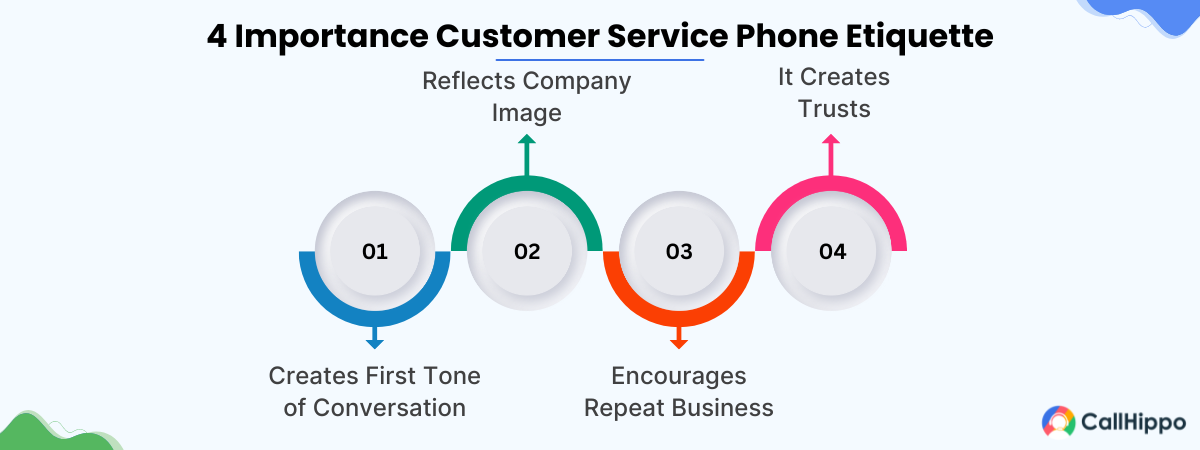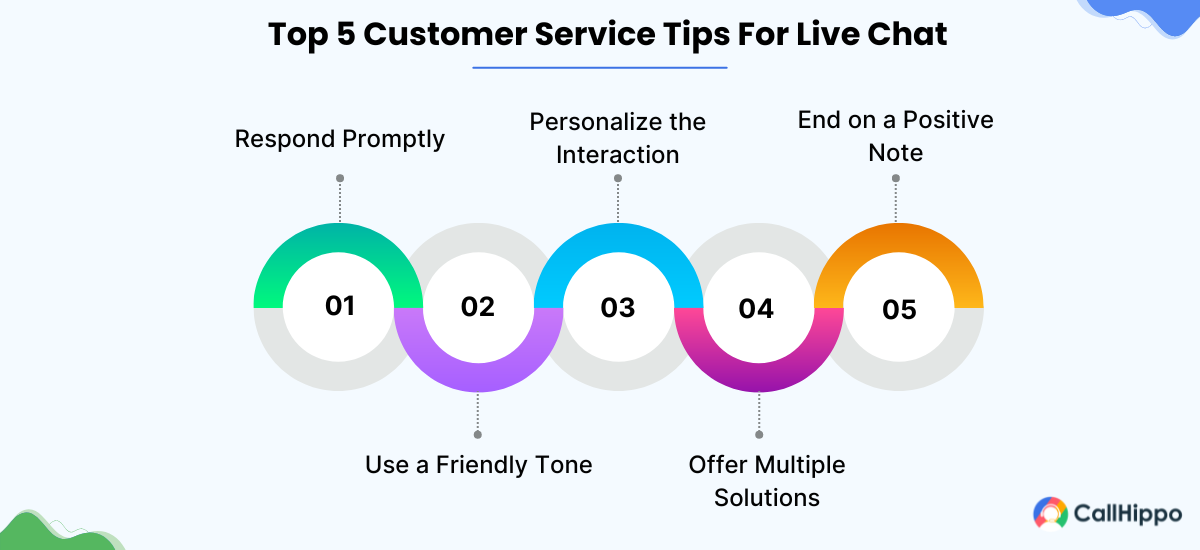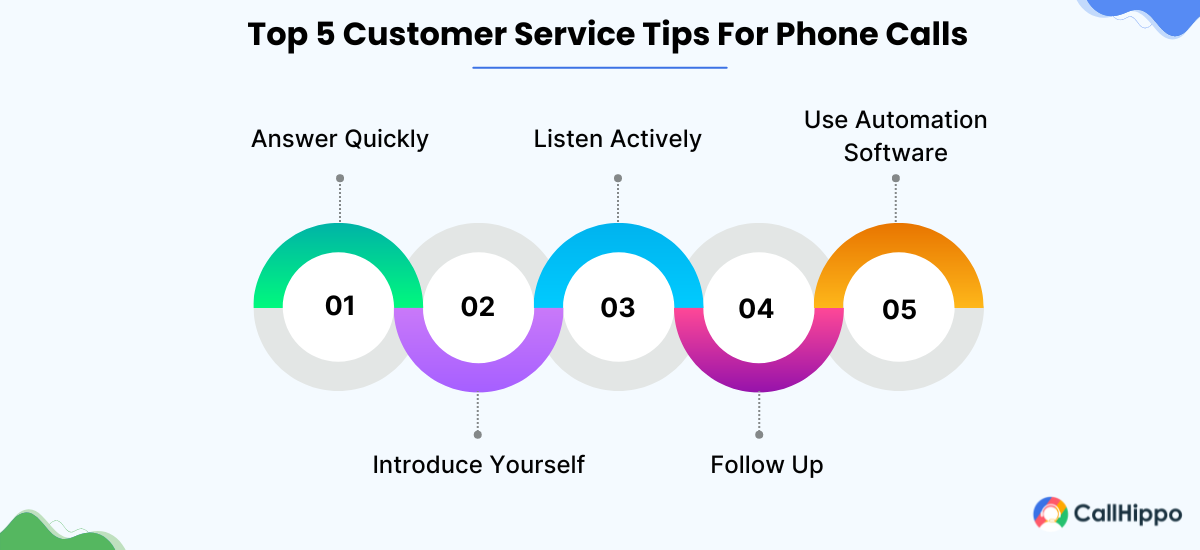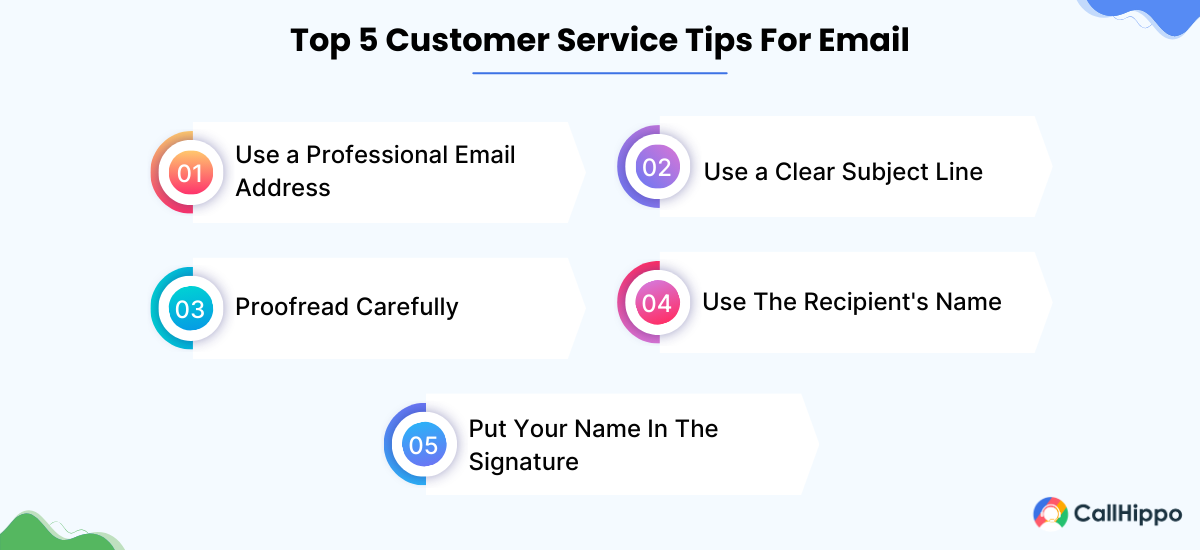Customer service is no longer a bonus – it’s a necessity. As 93% of customers will make repeat purchases from a company based on how well it manages relationships with customers.
Having profound customer etiquette is the cornerstone for building positive customer relationships, enriching loyalty, and driving repeat business.
But what exactly is customer service etiquette, and how can a company ensure that its team consistently delivers exceptional customer service? This article will answer all of these questions.
What is Customer Service Etiquette?
Customer service etiquette refers to the set of guidelines and principles that govern how a business interacts with its customers, particularly during support interactions.
It involves active listening, empathy, clear communication, and respect. These elements are crucial in every mode of customer interaction, whether it’s a virtual phone call, live chat, or email.
Effective customer support etiquette ensures a smooth and positive customer experience, leaving a lasting impression that goes beyond simply resolving an issue.
Why is Customer Service Phone Etiquette Important?
The telephone remains a primary channel for customer service interactions. A proper phone etiquette can leave a lasting positive impression, while poor customer service can damage a company’s reputation. Here’s why it’s important:

1. Creates First Tone of Conversation
A professional greeting and courteous tone set the stage for the entire interaction.
The customer will become irritated and less likely to collaborate with you if your call center agent seems rushed, upset, or uninterested.
However, if the caller comes out as friendly and welcoming, he will put the customer at ease and increase the chance for them to collaborate with the company.
2. Reflects Company Image
When representatives speak clearly, politely, and knowledgeablely, it conveys that your company values professionalism. This impression can influence customers’ perceptions of your overall brand quality.
Good phone etiquette demonstrates that your company pays attention to the details that matter, indicating a commitment to excellence. This can be particularly important in industries where precision and care are critical.
For example, the Career counseling Industry, the Healthcare industry, and Legal counseling.
3. Encourages Repeat Business
When customers have positive interactions over the phone, they are more likely to remember your company favorably. Customers appreciate when their issues are handled efficiently, and this satisfaction can lead to loyalty and repeat business.
"Nearly three out of five consumers report that good customer service is vital for them to feel loyalty toward a brand."
Thus, by consistently delivering exceptional phone service, your company can create a positive impression, build strong customer relationships, and encourage repeat business.
4. It Creates Trusts
When you employ good customer service phone protocol, you develop trust with your caller. They’ll know that they can rely on you to be respectful, patient, and helpful. This is crucial because it’ll make them more inclined to do business with you in the future.
Since phone calls are often the first direct interaction a customer has with your business, a well-handled call can create a pleasant experience and build a strong emotional connection, making customers more likely to return.
5 Customer Service Etiquette Tips For Live Chat
Live chat is a preferred and cost-effective way for clients to reach the customer service team in case they have any issues.
Additionally, 82% of customers are satisfied with live chat support rather than emails and social media support.
Live chat allows for real-time support interactions, making it a valuable tool for businesses. Here’s how to ensure your live chat interactions are positive:

1. Respond Promptly
In industries where fast service is not the norm, being known for prompt responses can give your company a competitive edge.
Customers are more satisfied when their inquiries and issues are addressed swiftly. Moreover, quick responses demonstrate that you value and respect the customer’s time, which is essential for maintaining a positive relationship.
A call agent can respond promptly by:
- Using Call Routing and IVR Systems
- Employing Call Monitoring and Alerts
- Utilizing Call Queuing
- Preparing Pre-Call Information
- Implementing Call Back Options
2. Use a Friendly Tone
A friendly tone helps establish a connection with the customer, making them feel comfortable and valued. When dealing with frustrated or upset customers, a friendly tone can help defuse tension and create a more relaxed atmosphere, making it easier to resolve issues.
Friendly communication is typically clearer and more engaging. Thus, customers are more likely to listen and respond positively when they feel the customer service representative is approachable and kind.
1. Instead of a monotonous “Hello, how can I help you?” use a more enthusiastic “Good morning! How can I assist you today?”
2. Instead of saying, “I can’t do that,” say, “Let me see how I can help you with this.”
3.Address customers by their names and personalize interactions. For example, “Thank you for calling, Mr. Smith. How can I make your day better?”
4.Show that you’re actively listening by using affirmations like “I understand,” “Absolutely,” or “I’m here to help.”
5.End the call on a positive note. Instead of just saying “Goodbye,” use “Thank you for calling. Have a wonderful day!”
3. Personalize the Interaction
Start the chat by addressing the customer by name. For instance, “Hello, Krina! How can I assist you today?” This small gesture makes the interaction feel more personal and welcoming.
If the customer has interacted with your company before, reference those past interactions to show continuity and understanding. For example, “I see you reached out last week about your order. How can I further assist you with that today?”
End the conversation with a personalized message. For instance, “Thank you for chatting with us, Krina. Have a great day!” This will give a positive ending to your conversation.
4. Offer Multiple Solutions
Before offering solutions, ask clarifying questions to fully understand the customer’s problem. After that, clearly outline each solution, including the benefits and potential drawbacks of each.
For instance, “You can either update the software to the latest version, which includes several bug fixes, or we can provide a patch for the current version that addresses the specific issue you mentioned.”
Let the customer choose the option that best fits their needs. If the initial solutions don’t meet the customer’s needs, have additional options ready. Take customer feedback to understand their needs and wants. Thus, offering multiple solutions leads to greater customer loyalty and satisfaction.
5. End on a Positive Note
Ending a live chat on a positive note is crucial for leaving a lasting good impression and ensuring the customer feels satisfied with the interaction. Recap the key points discussed and the actions taken during the chat. Apart from this, make sure the customer knows they can reach out again if they need further help.
Share relevant contact information or resources for future reference. For example, “You can reach us anytime through this chat or call our support line at 1-800-123-4567. Additionally, our help center is available online for any FAQs you might have.
This will ensure that the customer has the right source to connect with you in the future if they have any questions related to your service.
5 Customer Service Tips For Phone Calls
Phone call customer service remains one of the most preferred points of contact for customers to solve their queries.
Here are 5 best practices for customer service phone etiquette to be followed:

1. Answer Quickly
Answering phone calls quickly is crucial for delivering great customer service and maintaining a positive brand image. Quick response times reduce the likelihood of customers hanging up before speaking to a representative.
Use intelligent call routing to direct calls to the appropriate agent quickly, reducing wait times. If wait times are unavoidable, offer a call-back option so customers don’t have to wait on hold, improving their experience and perception of your service.
2. Introduce Yourself
Introducing yourself effectively on a call is crucial for establishing a connection and setting a positive tone right from the start. Begin with a polite and friendly greeting, followed by identifying yourself clearly.
Following that, immediately convey your readiness to assist the caller with their inquiry or issue. Depending on the context, briefly mention your role or area of expertise to reassure the caller. Conclude your introduction with a warm closing statement to set a positive tone for the interaction.
Let us understand by an example scenario:
- Caller: “Hello, I have a question about my recent order.”
- Your Introduction: “Good afternoon! This is [Your Name] from customer support. I’m here to assist you with any questions you have about your order. Could you please provide me with your order number?”
3. Listen Actively
Give your complete attention to the caller by avoiding distractions such as typing or background noise. Let the caller express themselves fully without interrupting. Thus, this shows respect and allows you to gather complete information before responding.
Encourage the caller to elaborate by asking questions that require more than a simple yes or no answer. For example, “Can you tell me more about what happened?”
Before concluding the call, summarize the action plan and confirm that both parties agree on the next steps to be taken.
4. Follow Up
Summarize the discussion periodically to ensure both parties are on the same page. Clearly outline what actions you will take or what information you will provide after the call. For instance, “I’ll check the status of your refund and email you an update by the end of the day.”
Fulfill any promises made during the call promptly. If you commit to sending information or following up with a resolution, do so within the agreed timeframe.
Let us understand this by a scenario:
- During Call: “Thank you for providing your account details. I’ll investigate the billing discrepancy and get back to you with a resolution.”
- After Call: “Hello, [Customer’s Name]. Following our conversation, I’ve confirmed the billing error and processed a refund to your account. You’ll receive an email confirmation shortly. Please let me know if there’s anything else I can assist you with.”
5. Use Automation Software
Call center agents can improve their performance by using call rerouting solutions to avoid long hold times.
By providing an alternative method of answering customer queries, these automatic software helps to reduce the number of calls that need to be handled by the customer support agents.
By connecting your customer with an experienced agent who can solve their problem, you save time and increase customer satisfaction.
Your customer service representatives won’t have to keep asking for customer details because everything is smoothly linked, allowing them to focus on solving the issue immediately.
5 Customer Service Tips For Email
After phone calls, email is the second most common form of providing customer service.
The primary issue with email is that customer service agents frequently become overloaded with support tickets and are unable to adequately handle them all.
However, use the following email etiquette for customer service to improve email customer support’s effectiveness and user experience for all parties involved:

1. Use a Professional Email Address
Your email address is often the first thing recipients see. A professional address reinforces your credibility and seriousness in business interactions.
A professional email address, typically based on your domain (e.g., [email protected]), reinforces your brand identity and aligns with your business website.
"Including your role or department can add context and professionalism (e.g., [email protected] or [email protected])"
Example of a Professional Email Address:
- Correct: [email protected]
- Incorrect: [email protected]
2. Use a Clear Subject Line
A clear subject line allows recipients to immediately grasp the topic or purpose of the email without needing to open it. Thus, clearly state the purpose or topic of the email in a few words and avoid vague or ambiguous subject lines.
If applicable, include relevant details such as project names, deadlines, or action items to provide context. Furthermore, use keywords relevant to the email’s content to make it easily searchable later.
Note: Limit the subject line to 6–8 words to ensure it’s concise and easy to read.
3. Proofread Carefully
Proofreading your emails before sending them is crucial to ensuring clarity, professionalism, and accuracy in your communication. Presenting error-free content reflects positively on your attention to detail and professionalism.
Reading your email aloud helps identify awkward phrasing or missing words that may not be apparent when reading silently. Put yourself in the recipient’s shoes to anticipate how they might interpret your message and adjust accordingly.
This practice contributes to clearer, error-free exchanges and supports positive professional relationships.
4. Use The Recipient’s Name
Using the recipient’s name in email communication is a simple yet powerful way to personalize your message.
Start your email with a personalized greeting such as “Dear Brock” or “Hi Julie” rather than a generic “Dear Customer” or “Hello.” While it’s good to use the recipient’s name, avoid overusing it within the body of the email. Mentioning it once or twice is usually sufficient.
Let us look at an example:
- Greeting: “Hi Alex, I hope you’re doing well.”
- In the Body: “Alex, I wanted to follow up on our previous conversation regarding the project timeline.”
- Closing: “Thank you, Alex, for your attention to this matter.”
5. Put Your Name In The Signature
A structured signature with your name reflects a professional approach and attention to detail. Clearly stating your name ensures the recipient knows exactly who the message is from, preventing any confusion.
Type your full name directly beneath the closing phrase to ensure immediate identification. Below your name, add your job title, department, company name, and contact details, such as phone number and email address.
This practice contributes to a positive impression and facilitates better engagement with your recipients.
Make Customer Service Etiquette Easy with CallHippo
CallHippo is a cloud-based business phone system that empowers businesses to deliver exceptional customer service.
With CallHippo Ai you can use features like live call monitoring, call conference, and smart call forwarding, which can remarkably escalate the quality of customer service etiquette. Start Your Free Trial Today!
Wrapping Up
By prioritizing good customer service etiquette and equipping your team with the right tools, your business can nurture positive customer relationships and build brand loyalty.
Remember, a happy customer is a loyal customer, and that’s the key to sustainable business growth.
FAQs
1. What are the 4 basics of customer service?
The four basics of customer service are Helpfulness, Courtesy, Patience, and Communication.
2. What are the 7 C’s of customer service?
The seven C’s of customer service are Clarity, Consistency, Credibility, Competence, Courtesy, Commitment, and Convenience.
3. What are the six pillars of customer service?
The six pillars of customer service are Customer Expectations, Personalization, Integrity,, Resolution, Time and Effort, and Empathy.

Subscribe to our newsletter & never miss our latest news and promotions.









